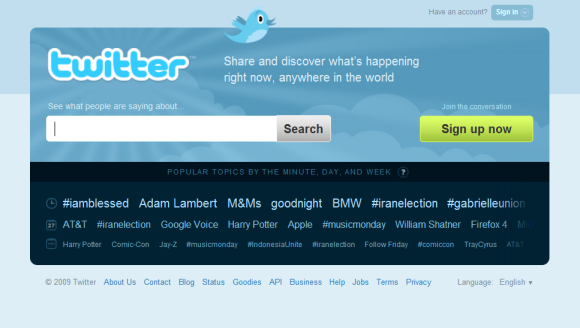 Sometimes you read a study and think: “Ah, this is interesting information”. So, you write about it in a News Update.
Sometimes you read a study and think: “Ah, this is interesting information”. So, you write about it in a News Update.
And then, you stumble upon it again, and think twice about the research. This happened to me with the ‘Ad Effectiveness study’ conducted by Forbes. And browsing through it again, my feeling was that the title of this eMarketer article reflected the result, but the study itself mixes apples and eggs in some way…
Still, the main statement of the study remains an important trend in online marketing, and is an even more important praise for the work of online publishers (yes, probably a bit self-referential for Forbes).
“Respondents were by far the least happy with ad networks, with half saying that the results did not meet expectations” (…) “Ad network spending is all about demand fulfillment while direct-to-publisher display is much aligned with the traditional advertising goals of demand creation,” said Forbes.com president and CEO Jim Spanfeller.
However, it has to be said that ‘ad networks’ is not a tactic for generating conversion. It is a supplier that offers ‘cheap space’ by bundling platforms into offers in most cases. Platform owners have a much deeper understanding of their target group and can definitely do a better consulting in terms of converting their target group into potentials for their clients. Absolutely, I agree with that statement, having done this for years…
BUT: Taking my view on the study, the set up of the study is in some way irritating. When the marketing executives were asked on budget allocations the results were these…

…and what they see as most effective tactics for generating conversion? Site or page sponsorship and SEO were considered the most effective ways online.

Thinking about the answering options (and bearing in mind my brand theme ‘tools, tactics, trends’) that were given to the responding marketers though, these options need to be separated from each other…
The question, I was asking myself is… Is viral marketing really an ad tactic? In my eyes it is not. It is a strategic communication tactic which integrates viral ads as some relevant online marketing tool.
So, this study set up seems to be a comparison of apple and eggs. Viral marketing is done in social networks. It is the way in which brand awareness other marketing objectives can be increased. Viral ads is the tool that may be spread like a computer virus by the users. It cannot be influenced like banner or text ads. Nor can it be bought. So, it is a modern marketing trend with little historical definition or proven success.
And, maybe such a study should think about: What can be bought by marketers, and what cannot in our times of social media.
Spot on!
The following summary is meant to make clear what steps have to be done first by marketers to create the conversation results their bosses appreciate… and it is a guideline for the chronology of setting up an online marketing strategy.
1.) Tactics
At first, marketers have to think about the tactics they can choose from…
SEO, e-mail and e-newsletter, site and page sponsorship, corporate web TV or viral marketing.
2.) Tools
Then, they have to decide on the tools that can be used to make these tactics efficient…
good texts (I am missing this most interesting option), banners, or viral ads.
3.) Trends
And finally, we have options that might create powerful conversion…
The use of ad networks, behavioral targeting and pay per ‘x’ models (x=impression, unique user, sales, click etc.)
If the online industry continues to publish studies that mix apples and eggs, it is no wonder that 57% of respondents said they still spend less than 25% of their marketing budgets online.
It is still early days in online marketing, it seems…

 In a lot of talks and meetings with clients I am asked if Twitter is a sales tool. Now, what would you say? The university professor might answer with a Solomonic answer: “Well, it depends how you see it…”. Being a member of the Twitterati it is one of these questions where you have to hold on to your horses in order not to be too excited. The best answer is probably: “Yes, it is… and No, it is not!”…
In a lot of talks and meetings with clients I am asked if Twitter is a sales tool. Now, what would you say? The university professor might answer with a Solomonic answer: “Well, it depends how you see it…”. Being a member of the Twitterati it is one of these questions where you have to hold on to your horses in order not to be too excited. The best answer is probably: “Yes, it is… and No, it is not!”…
 Compared to the old front page (see right), the main benefit of Twitter becomes more clear now for new users and makes the USP of the platform obvious right from the start.
Compared to the old front page (see right), the main benefit of Twitter becomes more clear now for new users and makes the USP of the platform obvious right from the start.








